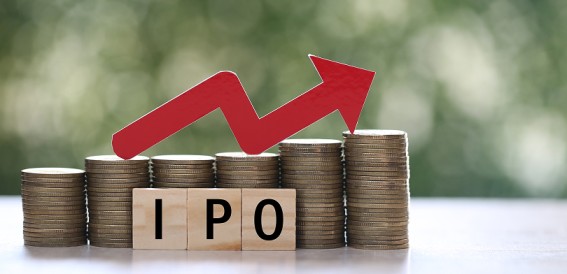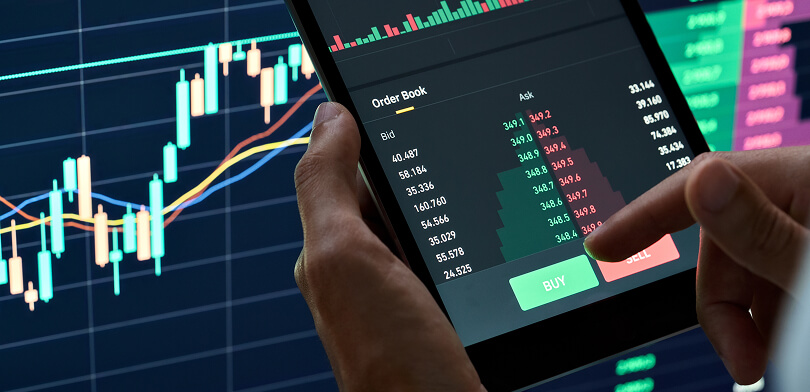- Last Updated: Apr 19,2024 |
- Religare Broking
Navigating the intricacies of the financial market requires an understanding of various terms and concepts. One such concept is the Grey Market Premium (GMP). In this discussion, we will delve into what GMP is in IPOs and how it influences investors’ perceptions and decisions. By comprehending the dynamics of GMP, individuals can gain valuable insights into market sentiment and the potential value of certain securities before they officially hit the market.
Topics Covered
- What is the Grey Market?
- What is Grey Market Premium (GMP)?
- Types of Trading in Grey Market
- How Does it Work?
- How to Calculate Grey Market Premium?
What is the Grey Market?
The grey market is an informal or unofficial marketplace. It can be accessed for trading any product or commodity. A grey market involved in share trading does not have any specific rules. However, it does not mean that grey markets are involved in forging securities or illegal trading. The grey markets in India offer shares of IPO-bound and other public companies.
Stocks are traded in grey markets before they are listed on stock exchanges. Similarly, shares of IPO-bound companies are found in the grey market. Unofficial dealers and brokers facilitate trading in grey markets. Securities and Exchange Board of India (SEBI) and other regulatory authorities have no jurisdiction over grey markets. Instead of rules and regulations, a grey market operates on trust among investors. Usually, trading in grey markets occurs with the help of small paper chits. The amount for stocks in grey markets is paid in cash to dealers.
What is Grey Market Premium (GMP)?
Now that you understand grey markets let us discuss what GMP is in IPO. You can analyse the demand for a particular stock by understanding what its grey market premium is. GMP is the difference between the unofficial price of shares in grey markets and the official listing price. The official listing price could be for a stock exchange or an IPO. When the GMP is high, it means the difference between the listing and the unofficial price is more.
GMP can also be defined as the extra price investors are willing to pay for purchasing shares in grey markets. Usually, the GMP for shares is positive. It happens because the demand for shares is high in unofficial markets. However, the GMP can be negative in some cases. When the GMP is negative, the unofficial price of shares is lower than the official price. It happens when the buzz for shares in an upcoming IPO is less.
Types of Trading in Grey Market
Now that you understand what GMP is in IPO, here are the types of trading in grey markets:
- Pre-IPO trading is the most common form of trading in grey markets. IPO-bound public companies sell their shares in grey markets at an increased rate.
- Unlisted stock trading is also available in grey markets. You can buy or sell shares that aren’t listed on stock exchanges yet.
- Unlisted foreign stocks are also traded in grey markets. You can find stocks of foreign companies that aren’t listed on local stock exchanges yet.
How Does it Work?
Now that you understand what GMP is in IPO, here’s how stock trading in the grey market works:
- Investors apply for an upcoming IPO by submitting their applications.
- Some investors realise that the value of shares is greater than the listing price. They accumulate additional shares in grey markets before IPO allotments through dealers. These are also known as grey market buyers.
- There is always a risk of non-allotment in an IPO. Some investors might sell their shares before the IPO allotment at a premium price to eliminate the risk.
- After IPO allotment, you might be contacted again to sell your shares at a premium rate.
- Some investors might not receive any shares after the IPO allotment. In such a case, there will be no settlement in the grey market.
Additionally Read: Meaning of Demat Account
How to Calculate Grey Market Premium?
Besides understanding the GMP, investors must know how to calculate the grey market premium. The GMP of particular stocks can be calculated with a straightforward formula. You only have to find the difference between the unofficial price and listing price of shares. Let us understand how to calculate GMP with an example:
Let us say an IPO-bound company has sold some of its shares in grey markets. The IPO listing price of a single share is Rs 500. However, shares are being sold in grey markets before the IPO at Rs 550 each. In such a case, the GMP will be:
GMP = Price of a single share in the grey market – price of a single share in IPO
GMP = INR (550-500) = INR 50 (for the above example).
It means that the rate of a single share is Rs 50 more in the grey market than IPO.
When the GMP is high for shares, it shows the buzz for the upcoming IPO. It shows that investors are willing to purchase company shares at a premium price in grey markets. When the GMP is negative, the buzz for the upcoming IPO is not much. It happens when the share price in grey markets is lower than the listing price.
In a Nutshell
Gaining a grasp of the Grey Market Premium (GMP) is crucial for investors aiming to decode the dynamics of Initial Public Offerings (IPOs). The GMP, representing the difference between unofficial and official listing prices, offers insights into market sentiment and demand for specific stocks before they are formally listed on the stock exchange. It’s a valuable indicator of potential value and investor interest. For those interested in participating in IPOs, having a free demat account is advantageous as it eliminates the burden of account maintenance fees, making it easier for investors to manage their investments.


















